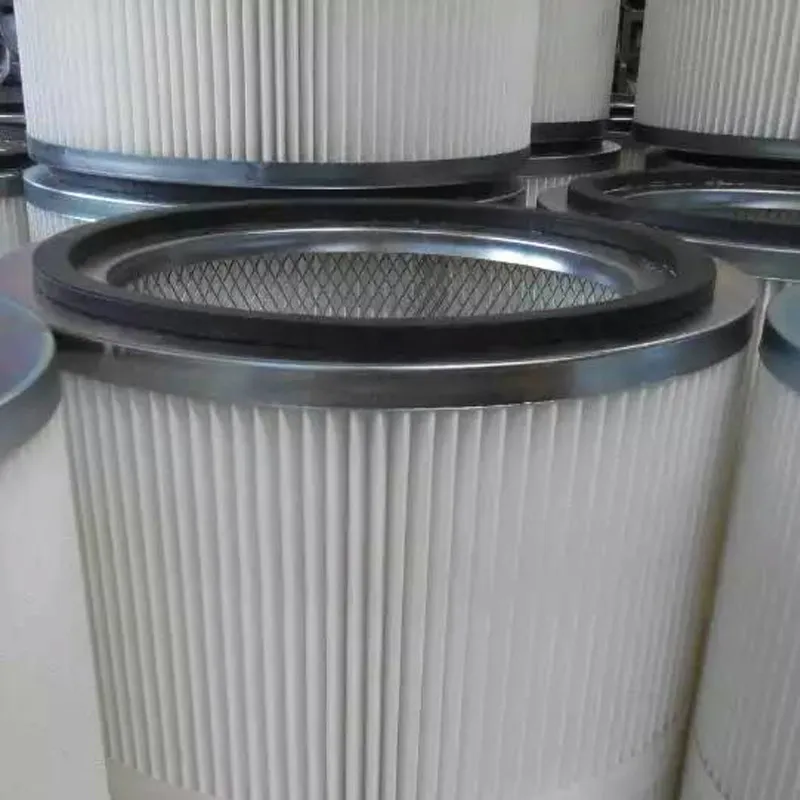 Tel:
+8618931101301
Tel:
+8618931101301
8 月 . 13, 2024 05:32 Back to list
Understanding the Importance and Functionality of Cartridge Filters in Air Filtration Systems
Understanding Cartridge Filter Air Systems
In various industrial and environmental applications, the need for clean air is paramount. One of the popular technologies used for air filtration is the cartridge filter air system. This technology is renowned for its efficiency in removing particulate matter from the air, thus ensuring a cleaner and safer working environment.
What is a Cartridge Filter?
A cartridge filter is a cylindrical filter that is designed to remove contaminants from air or liquids. It consists of a filter media, typically made from materials such as fiberglass, cellulose, or synthetic fibers, housed within a protective outer shell. The design is compact, making them easy to replace and maintain, thereby minimizing downtime in operations.
How Cartridge Filters Work
Cartridge filters operate by allowing air to pass through the filter media. As the air flows through, particles such as dust, pollen, and other pollutants are trapped in the fibers. The effectiveness of a cartridge filter is determined by its micron rating, which indicates the size of particles it can effectively capture. For instance, a filter with a rating of 5 microns will capture larger particles while allowing smaller ones to pass through.
One of the main advantages of cartridge filters is their high surface area, which allows for greater filtration capacity compared to traditional bag filters. This means cartridge systems can operate at higher efficiencies and with a lower pressure drop across the filter, leading to energy savings and reduced operational costs.
Applications of Cartridge Filter Air Systems
cartridge filter air

Cartridge filter air systems are utilized in various industries including manufacturing, pharmaceuticals, food processing, and HVAC (Heating, Ventilation, and Air Conditioning) systems. In manufacturing facilities, these filters are crucial for controlling airborne dust and ensuring compliance with health and safety regulations. In pharmaceutical and food processing industries, maintaining air quality is essential to prevent contamination and ensure product integrity.
In HVAC systems, cartridge filters are commonly used to improve indoor air quality (IAQ). Poor IAQ can lead to a range of health issues including respiratory problems, allergies, and other long-term health conditions. By using cartridge filters, businesses can ensure that the air circulating in their buildings is clean and free from harmful particles.
Maintenance and Cost-Effectiveness
One of the key benefits of cartridge filter air systems is their relatively low maintenance requirements. Unlike other filtration systems, such as bag filters, cartridge filters can be easily swapped out without the need for specialized tools. This ease of maintenance translates to lower operational costs and less downtime.
Moreover, many modern cartridge filters are designed for extended service life, reducing the frequency of replacements. Some filters even come with features like washable media, further enhancing their cost-effectiveness and sustainability.
Conclusion
In summary, cartridge filter air systems are an effective solution for maintaining air quality across various industries. Their ability to capture fine particulate matter, coupled with low maintenance needs and cost savings, makes them a popular choice for businesses aiming to promote a cleaner and safer environment. As air quality regulations become increasingly stringent, the reliance on efficient filtration technologies such as cartridge filters is only expected to grow. This innovation not only helps protect employee health but also supports overall environmental sustainability, making it a win-win for industries and the communities they serve.
-
How to choose a high-efficiency air filter? Here comes a professional guideNewsOct.21,2024
-
Air filter: multi-field application, protecting fresh airNewsOct.17,2024
-
Carbon air filter: a green guard to protect air qualityNewsOct.16,2024
-
Can activated carbon completely remove indoor odors and pollutants in air purification?NewsOct.14,2024
-
How to filter air efficiently and ensure indoor air quality?NewsOct.12,2024
-
Activated carbon filter: the invisible guard of clean water lifeNewsOct.11,2024

 Email:
Email:





